Search Thermo Fisher Scientific
FIGURE: 1 / 9
beta Arrestin 1 Antibody (PA5-119643) in ICC/IF
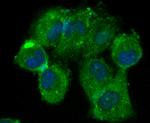
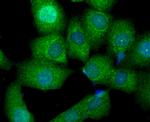
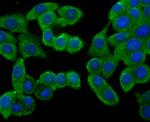
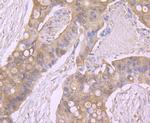

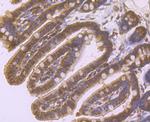
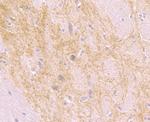
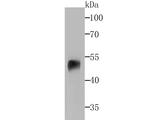
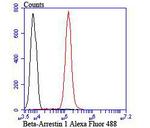
Product Details
PA5-119643
Species Reactivity
Host/Isotype
Class
Type
Immunogen
Conjugate
Form
Concentration
Purification
Storage buffer
Contains
Storage conditions
Shipping conditions
RRID
Product Specific Information
Positive Control: Human placenta tissue lysate, A549, HUVEC, LOVO, rat brain tissue, human colon cancer tissue, human breast tissue, mouse colon tissue, Jurkat.
Subcellular Location: Cytoplasm. Membrane. Nucleus.
Target Information
Beta Arrestin 1 is a member of a family of proteins widely expressed but especially abundant in the central nervous system. Serving as an adaptor or scaffold molecule, beta Arrestin 1 is essential for mitogenic signaling and mediates agonist-dependent desensitization and internalization of Gprotein-coupled receptors (GPCRs, e.g., beta 2-adrenergic receptor). After binding to their ligand and interacting with heterotrimeric G proteins, GPCRs are phosphorylated by G-protein receptor kinases (GRKs) on serine residues. Beta Arrestin 1 in the cytosol is phosphorylated by ERK1 and 2 on serine412 in a negative feedback mechanism and binds to the phosphorylated receptors at the plasma membrane. Serine 412 is then dephosphorylated and the GPCRs are internalized, leading to activation of the Ras, Raf, ERK1 and 2 signaling pathway.
For Research Use Only. Not for use in diagnostic procedures. Not for resale without express authorization.
References (0)
Bioinformatics
Protein Aliases: arrestin; arrestin 2; Arrestin beta-1; arrestin, beta 1; beta-arrestin; Beta-arrestin-1; beta-arrestin1; Non-visual arrestin-2
Gene Aliases: 1200006I17Rik; ARB1; ARR1; ARRB1; AW208571; BARRES; G430100A01Rik
UniProt ID: (Human) P49407, (Rat) P29066, (Mouse) Q8BWG8
Entrez Gene ID: (Human) 408, (Rat) 25387, (Mouse) 109689

Performance Guarantee
If an Invitrogen™ antibody doesn't perform as described on our website or datasheet,we'll replace the product at no cost to you, or provide you with a credit for a future purchase.*
Learn more
We're here to help
Get expert recommendations for common problems or connect directly with an on staff expert for technical assistance related to applications, equipment and general product use.
Contact tech support
